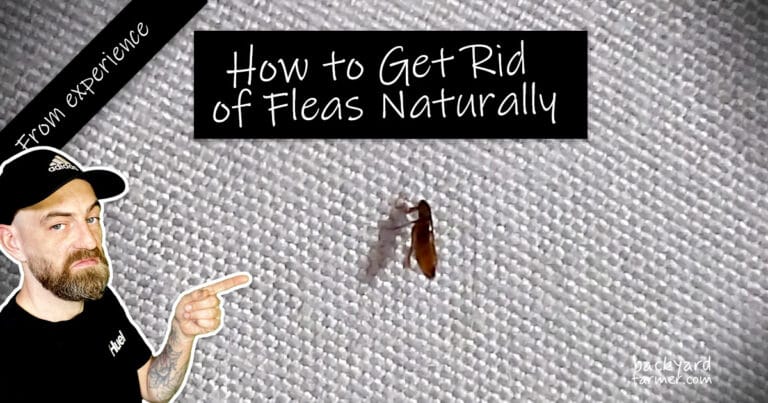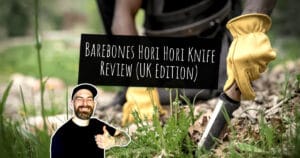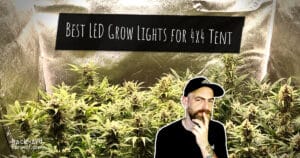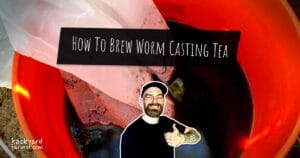Table of contents
- Introduction: Why Choose Natural Flea Control?
- Understanding the Flea Lifecycle
- Natural Flea Treatments for Pets
- Natural Flea Treatments for Other Pets
- Natural Flea Treatments for the Home
- Natural Flea Prevention for Your Yard
- Natural Flea Prevention for Humans
- Long-Term Flea Prevention: Natural Solutions
- Conclusion: Stay Flea-Free Naturally
Introduction: Why Choose Natural Flea Control?
Fleas can be a persistent problem for pet owners, affecting not just your pets but your home as well. If you’re looking for how to get rid of fleas naturally, you’ve come to the right place. Traditional flea treatments often rely on harsh chemicals, which can cause irritation and health issues for both your pets and family. Fortunately, there are natural, safe, and effective ways to combat fleas without using harmful solutions.
Chemical Flea Treatments Can Harm Pets and the Environment

Chemical flea treatments, such as those containing pyrethroids or organophosphates, are effective but come with risks. Pets may suffer from side effects like skin irritation, vomiting, or neurological issues. These chemicals also negatively impact the environment, seeping into water systems and soil, which can harm wildlife and ecosystems.
- Safer alternative to chemicals for pets and the environment.
- Helps avoid the long-term environmental impact of chemical residues.
To learn more about the risks of chemical pest control and explore safer alternatives, visit the Environmental Protection Agency’s guide on natural pest control solutions.
Natural Methods are Safer, Non-Toxic, and Eco-Friendly
Natural flea treatments rely on non-toxic ingredients like diatomaceous earth, essential oils, and vinegar-based sprays. These methods are pet- and child-safe, making them ideal for homes looking to avoid harsh chemicals. Additionally, eco-friendly natural treatments don’t contribute to environmental pollution.
- Non-toxic and safe for pets and children.
- Eco-conscious pet owners favor natural treatments to reduce pollution.
Comparison of Chemical vs. Natural Flea Treatments
| Aspect | Chemical Flea Treatments | Natural Flea Treatments |
|---|---|---|
| Toxicity | Contains harsh chemicals that may cause toxicity in pets and harm the environment. | Non-toxic, safe for pets, children, and the environment. |
| Common Ingredients | Pyrethroids, organophosphates, fipronil. | Diatomaceous earth, essential oils, vinegar. |
| Side Effects | Can cause allergic reactions, vomiting, neurological issues, or poisoning. | Fewer side effects, gentler on pets’ skin and health. |
| Cost | Expensive, especially prescription treatments. | Budget-friendly with many ingredients found at home. |
| Environmental Impact | Can pollute water systems and soil, harming wildlife. | Eco-friendly, does not harm the environment. |
| Ease of Use | Typically requires purchase from a store or vet. | DIY solutions easily prepared at home. |
| Long-Term Benefits | Potential build-up of resistance in fleas, limited environmental sustainability. | Promotes pet health and supports environmental sustainability. |
Avoid Side Effects Like Allergic Reactions or Toxicity in Animals
Pets can develop allergic reactions or suffer from toxicity when exposed to chemical treatments. Symptoms may include itching, swelling, and lethargy. Severe cases can even lead to poisoning. Natural flea control reduces these risks with gentler ingredients, which are less likely to cause allergic reactions.
- Reduces risk of allergic reactions in sensitive pets.
- Helps prevent toxic exposure or ingestion from chemical products.
Natural Solutions are Budget-Friendly and Can Be Done at Home
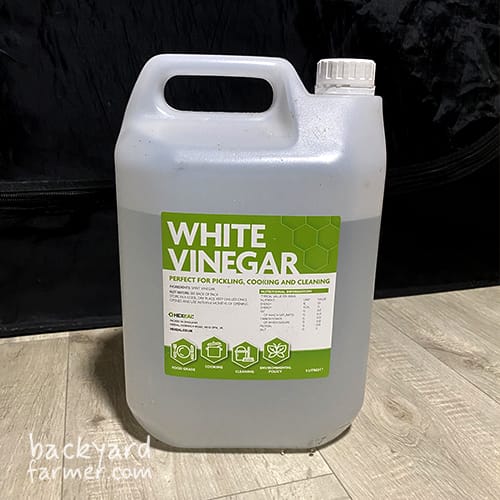
Natural flea treatments are often more affordable than chemical-based products. Many remedies use common household items, such as vinegar, essential oils, and food-grade diatomaceous earth, which are effective and easy to find. DIY solutions let you control what’s used on your pet and in your home without the high costs of commercial products.
- Cost-effective compared to vet-prescribed treatments.
- DIY flea control using common household ingredients.
Long-Term Benefits Include Better Pet Health and Environmental Sustainability
The consistent use of natural flea control methods promotes overall pet health by avoiding the harmful chemicals in conventional products. Additionally, natural treatments support environmental sustainability by minimizing pollutants and toxins released into nature.
- Supports long-term pet health by avoiding chemicals.
- Contributes to a sustainable, eco-friendly approach to flea control.
Understanding the Flea Lifecycle
Fleas Go Through Four Stages: Eggs, Larvae, Pupae, and Adults
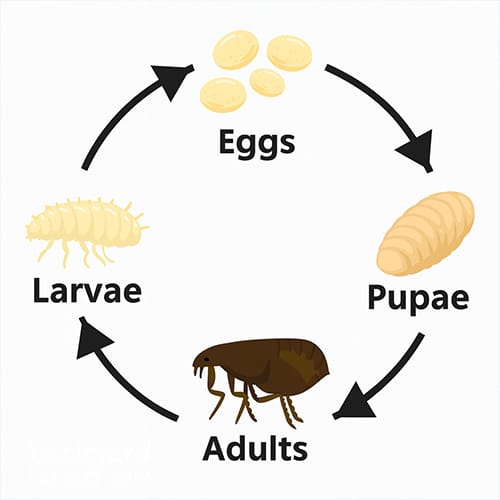
To effectively eliminate fleas, it’s important to understand their life cycle. Fleas go through four stages of development:
- Eggs: Laid by adult fleas on pets or in their environment.
- Larvae: Hatch from eggs and feed on organic matter.
- Pupae: Spin cocoons where they can remain dormant for months.
- Adults: Emerge from cocoons when they sense warmth and movement, looking for a host to feed on.
Each stage requires different methods of treatment to break the cycle and prevent reinfestation.
- Fleas can lay up to 50 eggs per day.
- Larvae can live in carpets, bedding, and furniture, making them hard to eliminate.
- Pupae are resistant to many treatments and can stay dormant for months.
You Must Break the Flea Lifecycle to Effectively Eliminate Infestations

Successfully eliminating fleas requires targeting each stage of their life cycle, not just the adult fleas. Many treatments only kill adult fleas, but if eggs, larvae, or pupae are left behind, the infestation will persist. Breaking the cycle ensures long-term control.
- Focus on treating your pets, home, and yard.
- Regular cleaning, vacuuming, and applying natural flea treatments help prevent eggs and larvae from developing into adult fleas.
Comparison of Flea Lifecycle Stages and Treatments
| Flea Stage | Characteristics | Natural Treatments |
|---|---|---|
| Eggs | Tiny, hard to spot, laid on pets or in their environment. | Regular vacuuming, wash bedding, diatomaceous earth on carpets. |
| Larvae | Feed on organic matter, can live in carpets, bedding, and furniture. | Use diatomaceous earth, clean areas with vinegar, regular vacuuming. |
| Pupae | Spin cocoons, can remain dormant for weeks to months. | Diatomaceous earth, vacuum frequently to disturb cocooned pupae. |
| Adults | Emerge from cocoons and feed on pets. | Use flea combs, apple cider vinegar spray, essential oils on pets. |
Natural Methods Target Fleas at Every Stage
To successfully get rid of fleas, it’s crucial to use treatments that address all stages of the flea life cycle. Natural methods can effectively target eggs, larvae, pupae, and adult fleas without the use of harsh chemicals.
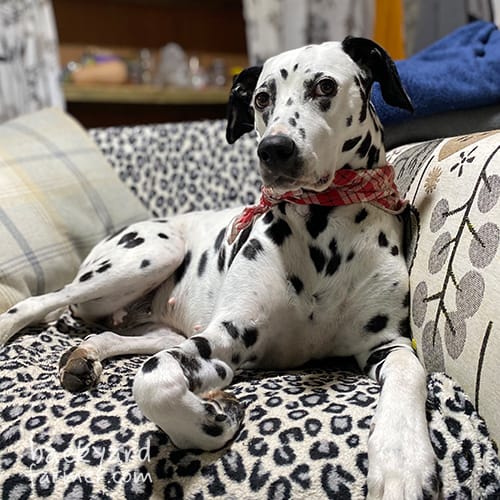
- Eggs: Regular vacuuming and washing of pet bedding help remove eggs from the environment.
- Larvae: Sprinkling diatomaceous earth on carpets and furniture kills larvae as they hatch.
- Pupae: Pupae are protected in cocoons, so frequent vacuuming is key to disturbing them.
- Adults: Flea combing, essential oil sprays, and apple cider vinegar are effective natural remedies to kill adult fleas on pets.
Regular Cleaning and Treatment of the Home and Pets are Essential
Maintaining a consistent cleaning routine is critical to controlling fleas. Fleas lay eggs in pet bedding, carpets, and furniture, so cleaning these areas regularly helps reduce flea populations. In addition, regularly treating pets with natural flea repellents and combing helps eliminate fleas before they lay more eggs.
- Vacuum carpets and furniture frequently to remove flea eggs and larvae.
- Wash pet bedding and soft furnishings in hot water to kill fleas and their eggs.
- Apply natural flea sprays or diatomaceous earth to prevent larvae from maturing into adult fleas.
Fleas Can Lay Eggs in Carpets, Bedding, and Furniture

One of the challenges of dealing with fleas is their ability to lay eggs in hard-to-reach areas. Fleas often lay their eggs in carpets, bedding, or upholstery, where larvae develop. These hidden eggs and larvae can make it difficult to fully eliminate an infestation if proper cleaning routines aren’t followed.
- Focus on high-traffic areas such as pet beds, carpets, and furniture.
- Use natural sprays or powders to treat these areas and prevent eggs from hatching into larvae.
Key Takeaways:
- Understanding the flea lifecycle is crucial for effective treatment.
- Breaking the flea cycle requires targeting eggs, larvae, pupae, and adults.
- Natural methods like vacuuming, diatomaceous earth, and essential oils can eliminate fleas at every stage of their life cycle.
- Regular cleaning of carpets, furniture, and pet bedding is essential for long-term flea control.
Natural Flea Treatments for Pets
Natural flea treatments can be highly effective in treating fleas on pets without the use of chemicals. Dogs and cats, in particular, can benefit from regular natural treatments that target fleas while protecting them from toxic ingredients. Below are specific methods for safely eliminating fleas from dogs and cats using natural remedies.
Natural Flea Treatment for Dogs
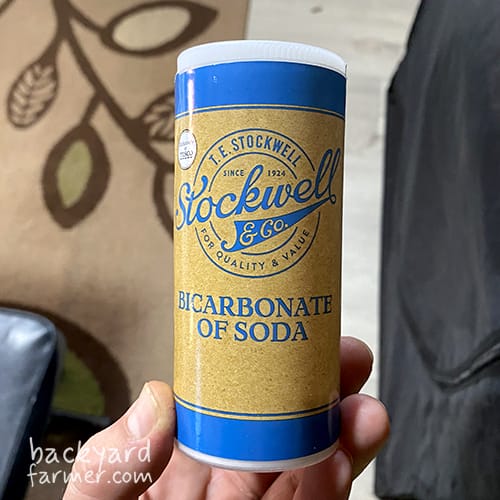
Diatomaceous Earth for Dogs (Bicarbonate of Soda)
- Food-grade diatomaceous earth or Bicarbonate of Soda is a natural, non-toxic powder that dehydrates fleas and kills them upon contact.
- Apply a small amount to your dog’s coat, avoiding sensitive areas like the eyes and nose.
- Rub the powder gently into the fur and allow it to sit for several hours before brushing it off.
Key Features:
- Non-toxic and safe for dogs.
- Effective for killing adult fleas and larvae.
- Can be used on dog bedding and around the house.

Essential Oils for Dogs
- Lavender, cedarwood, and rosemary are safe essential oils for repelling fleas on dogs.
- Always dilute essential oils with water or a carrier oil (like coconut oil) before applying to your dog’s fur.
- Focus on applying a small amount to areas like the neck and back, avoiding direct application to the face or ears.
Key Benefits:
- Natural flea repellent with soothing properties.
- Safe when diluted properly.
- Can be used on bedding for ongoing flea prevention.
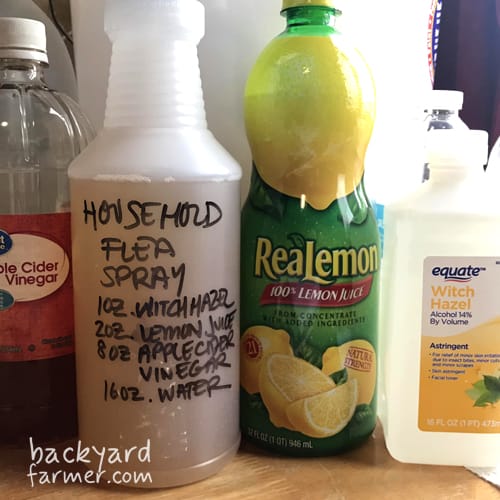
Homemade Flea Spray for Dogs
- Mix apple cider vinegar and water in equal parts to create a natural flea spray.
- Spray the solution lightly on your dog’s coat, avoiding the face and eyes.
- You can also spray this solution on bedding and around the home to prevent fleas from returning.
Key Benefits:
- Easy DIY flea treatment using household ingredients.
- Acts as a natural flea repellent.
- Affordable and safe for regular use.
For Cats

Diatomaceous Earth for Cats
- Use food-grade diatomaceous earth to treat fleas in cats, but apply it cautiously.
- Lightly dust the powder on your cat’s fur, focusing on the back and neck areas. Avoid the face, especially around the eyes and nose.
- Cats are meticulous groomers, so it’s crucial to apply only a small amount and brush it off after a few hours.
Key Benefits:
- Non-toxic, making it a safe option for cats.
- Kills fleas at various life stages.
- Can be sprinkled in the cat’s bedding and living areas.

Essential Oils for Cats
- Cats are more sensitive to essential oils than dogs, so it’s important to avoid toxic oils such as tea tree, eucalyptus, and citrus oils.
- Safe options include cedarwood and rosemary oil, but they should always be highly diluted with water or a carrier oil.
- Apply a small, diluted amount to your cat’s bedding rather than directly to their fur to minimize the risk of irritation.
Key Benefits:
- Cedarwood and rosemary oils can help repel fleas naturally.
- Safer when used indirectly, such as on bedding.
- Reduces the need for chemical treatments.
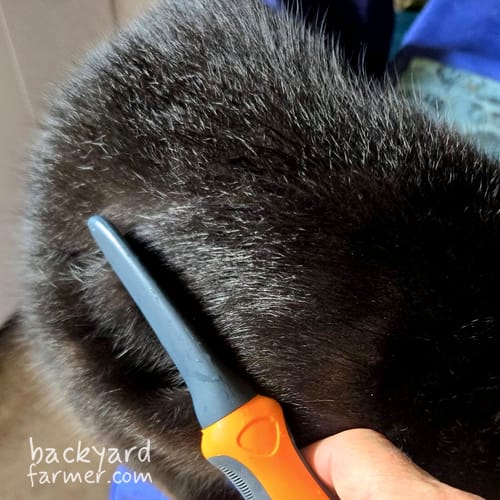
Flea Combing for Cats
- A fine-toothed flea comb is an effective tool for manually removing fleas from your cat’s fur.
- Focus on areas like the neck, back, and belly, where fleas are likely to hide.
- Dip the comb into soapy water between strokes to kill any fleas trapped in the comb.
Key Benefits:
- Physical removal of fleas without any chemicals.
- Great for regular flea control and monitoring.
- Safe for daily use on cats.
Comparison of Natural Flea Treatments for Dogs and Cats
| Treatment Method | For Dogs | For Cats |
|---|---|---|
| Diatomaceous Earth | Apply to the coat, rub in gently, safe and non-toxic | Apply lightly to fur, brush off after a few hours |
| Essential Oils | Lavender, cedarwood, rosemary (diluted) | Cedarwood, rosemary (highly diluted, avoid direct use) |
| Homemade Flea Spray | Apple cider vinegar and water mix, spray on coat | N/A (better to avoid direct sprays on cats) |
| Flea Combing | Use daily to remove fleas from fur | Effective for daily flea removal |
Key Takeaways:
- Diatomaceous earth is a safe and effective flea treatment for both dogs and cats but should be applied carefully to avoid contact with sensitive areas.
- Essential oils like lavender and cedarwood can be useful for dogs and cats but must be diluted and used with caution, particularly for cats.
- Flea combing is a simple, chemical-free method for physically removing fleas from both dogs and cats and should be part of your regular grooming routine.
- For dogs, apple cider vinegar sprays are an easy, affordable option to repel fleas naturally.
Natural Flea Treatments for Other Pets
For Rabbits
Rabbits, like cats and dogs, can also suffer from flea infestations. However, their delicate respiratory systems and sensitive skin require extra care when using natural treatments. Here are some effective and safe methods to treat fleas in rabbits:
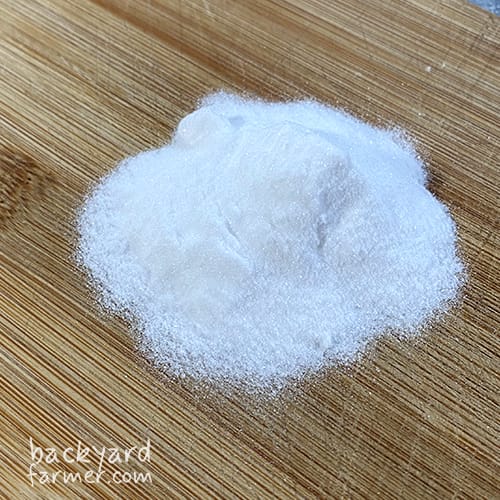
Diatomaceous Earth for Rabbits:
- Use food-grade diatomaceous earth (Bicarb Soda) to dust your rabbit’s fur and surrounding areas.
- Lightly sprinkle on their bedding and in areas they frequent, but avoid applying directly on the face or near the nose and eyes to prevent irritation.
- Regularly clean the rabbit’s hutch or living area to remove flea eggs and larvae.
Essential Oils for Rabbits:
- Essential oils should be used with extreme caution as rabbits are sensitive to strong scents.
- Cedarwood oil and lavender oil can be diluted with a carrier oil, such as coconut oil, and applied sparingly on your rabbit’s fur, but avoid sensitive areas.
- Always monitor your rabbit for any signs of irritation or respiratory distress after applying oils, and discontinue use if any adverse reactions occur.

Flea Combing for Rabbits:
- Use a fine-toothed flea comb to gently remove fleas from your rabbit’s fur.
- Focus on areas where fleas tend to gather, such as around the neck, back, and belly.
- Dip the flea comb in soapy water between strokes to kill fleas as you catch them.
For Hamsters/Guinea Pigs
Hamsters and guinea pigs are less likely to get fleas than larger pets, but they can still be affected, particularly if they come into contact with other flea-infested animals. Here are some safe and effective methods for treating fleas in these small pets:
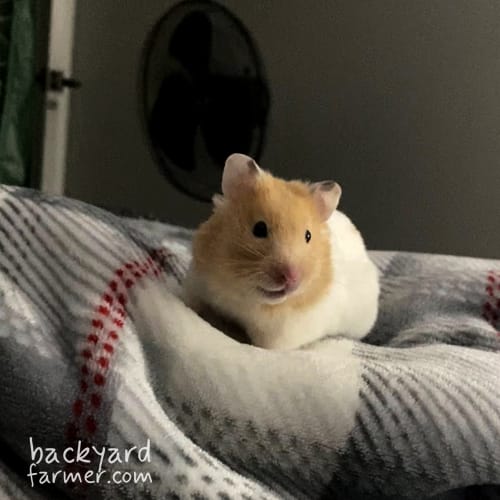
Diatomaceous Earth for Small Mammals:
- Avoid applying diatomaceous earth directly on their fur, as these small animals groom themselves frequently and may ingest it.
- Instead, lightly dust their bedding, cage flooring, and surrounding areas with food-grade diatomaceous earth to target fleas that may be present in their environment.
- Clean the cage frequently, replacing bedding and sanitizing surfaces.
Natural Flea Sprays for the Cage:
- Create a simple, natural flea spray using vinegar and water (equal parts) and mist it around the cage, bedding, and any toys or accessories.
- Avoid spraying directly on the hamster or guinea pig, but ensure the living environment is treated to kill fleas.
- Regular cleaning and removing uneaten food will help prevent fleas from breeding in the cage.
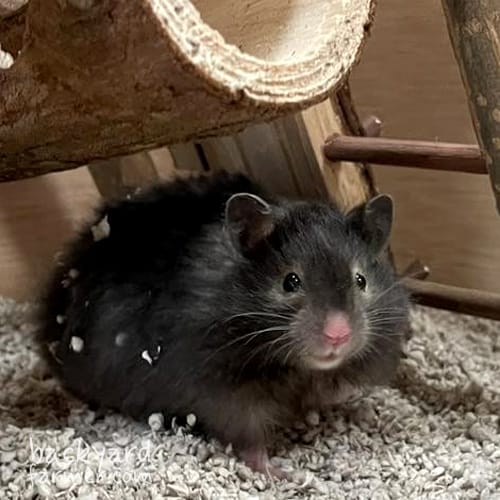
Regular Grooming:
- While hamsters and guinea pigs have shorter fur, using a small flea comb can help in physically removing any fleas.
- Brush gently, focusing on the areas around the neck and underbelly, where fleas might hide.
For Ferrets
Ferrets are more prone to flea infestations, especially if they have regular contact with other pets or outdoor areas. Here are some natural treatments to keep fleas at bay for your ferret:
- Diatomaceous Earth for Ferrets:
- Dust your ferret’s bedding and play areas with food-grade diatomaceous earth to kill fleas without the use of chemicals.
- Be careful not to apply the powder directly to the ferret’s fur, as ferrets are curious creatures and may inhale it, which can cause respiratory irritation.
- Safe Essential Oils for Ferrets:
- Ferrets can tolerate some essential oils, such as lavender and cedarwood, but it’s essential to dilute them properly.
- Mix the oil with water or a carrier oil, then apply lightly to the ferret’s bedding or collar, rather than directly on the skin to avoid irritation.
- Flea Combing for Ferrets:
- Just like with cats and dogs, a fine-toothed flea comb works well for ferrets. Focus on areas like the neck and tail where fleas tend to gather.
- Regular combing not only helps remove fleas but also acts as a bonding experience with your ferret.
Natural Flea Treatments for the Home
Fleas don’t just stay on your pets—they can infest your home, hiding in carpets, furniture, and bedding. Natural flea treatments for your home focus on cleaning and using non-toxic solutions to kill fleas at all stages of their lifecycle, without the risks associated with chemical products.
If you’re interested in more natural solutions for your home, explore our guide on the best way to get rid of weeds naturally.
Vacuuming for Flea Control
Vacuuming is one of the most effective ways to remove fleas, larvae, and eggs from carpets and furniture. Flea eggs and larvae are often hidden deep in fibers, so regular vacuuming helps disrupt their lifecycle.
- Vacuum daily, especially in high-traffic areas where pets spend time.
- Focus on carpets, rugs, furniture, and pet bedding.
- Empty your vacuum bag or canister into a sealed plastic bag immediately after vacuuming to prevent fleas from escaping back into your home.
Key Benefits:- Physically removes flea eggs and larvae from carpets and furniture.
- Simple, chemical-free way to control fleas indoors.
- Regular vacuuming disrupts the flea lifecycle and prevents reinfestation.
Diatomaceous Earth for Home Use
Food-grade diatomaceous earth is a powerful natural flea killer that works by dehydrating fleas, larvae, and eggs. It’s safe to use in your home and poses no risk to pets or children when used correctly.
- Sprinkle diatomaceous earth on carpets, furniture, and pet bedding.
- Let it sit for several hours to dehydrate fleas, then vacuum thoroughly.
- Repeat this process every few days during a flea infestation, and use as a preventive measure weekly.
Key Benefits:- Kills fleas at all stages of their lifecycle.
- Non-toxic and safe to use around pets and children.
- Affordable and effective when applied regularly.
Vinegar Sprays
A simple solution of vinegar and water is a great natural flea repellent. Fleas dislike the strong smell of vinegar, making it an effective way to keep them away from bedding, carpets, and furniture.
- Mix equal parts apple cider vinegar and water in a spray bottle.
- Spray the solution lightly on carpets, furniture, and pet bedding.
- Avoid soaking fabrics—light misting is enough to repel fleas.
Key Benefits:- Easy and affordable flea repellent.
- Safe for use on soft furnishings and bedding.
- Helps repel fleas without the use of chemicals.
Natural Laundry Practices
Washing your pet’s bedding, blankets, and any other fabrics that may be infested with fleas is an important part of controlling a flea infestation in your home. Using hot water and natural additives like vinegar ensures that fleas, larvae, and eggs are effectively killed.
- Wash pet bedding and any soft furnishings where your pets spend time in hot water.
- Add apple cider vinegar to the rinse cycle to kill fleas and eggs.
- Dry on high heat to ensure any remaining fleas are killed.
Key Benefits:- Hot water and vinegar kill fleas and eggs.
- Regular washing prevents fleas from settling in bedding or furniture.
- Safe, non-toxic laundry practices protect your home from fleas.
Regular Cleaning is Essential
Keeping your home free of fleas requires consistent cleaning. Fleas lay eggs in soft furnishings, carpets, and pet bedding, so regular cleaning is crucial to prevent eggs from hatching and larvae from developing.
- Vacuum carpets, rugs, and furniture daily during an infestation.
- Wash pet bedding weekly in hot water.
- Use diatomaceous earth or vinegar sprays as ongoing treatments to prevent reinfestation.
Comparison of Natural Flea Treatments for the Home
| Treatment Method | Application | Key Benefits |
|---|---|---|
| Vacuuming | Daily, focusing on carpets, rugs, and furniture. | Physically removes eggs, larvae, and adult fleas. |
| Diatomaceous Earth | Sprinkle on carpets, rugs, and pet bedding. | Kills fleas by dehydrating them; safe and non-toxic. |
| Vinegar Sprays | Lightly mist on soft furnishings and pet areas. | Natural flea repellent; easy to make and apply. |
| Natural Laundry | Wash bedding in hot water and vinegar. | Kills fleas and eggs effectively; prevents reinfestation. |
Key Takeaways:
- Regular vacuuming is essential for removing flea eggs and larvae from carpets and furniture.
- Diatomaceous earth is a powerful natural treatment for killing fleas in the home.
- Vinegar sprays act as an affordable, non-toxic flea repellent for soft furnishings and pet bedding.
- Frequent washing of bedding in hot water and vinegar helps eliminate fleas and prevent reinfestation.
Natural Flea Prevention for Your Yard
Fleas don’t just live indoors—they thrive in outdoor spaces like your yard, especially in warm, shaded areas. To prevent fleas from entering your home or affecting your pets, it’s essential to maintain a flea-free yard. Using natural flea prevention methods can keep your outdoor space safe and free from harmful chemicals.
Lawn Maintenance for Flea Control
Maintaining your yard properly is key to reducing flea populations. Fleas tend to hide in tall grass, piles of leaves, and shaded areas, so keeping your lawn tidy and well-groomed is an effective natural prevention method.
- Mow the lawn regularly to keep grass short, which makes it less attractive for fleas to hide.
- Remove leaf piles, compost, and excess yard waste, as these are prime hiding spots for flea larvae.
- Keep trees and bushes trimmed to reduce shaded areas where fleas thrive.
Key Benefits:- Reduces flea hiding spots and disrupts their lifecycle.
- Creates an open, sunny yard where fleas are less likely to survive.
- Simple, ongoing maintenance can significantly lower flea populations.
Diatomaceous Earth for Outdoor Use
Just as diatomaceous earth is effective indoors, it can also be applied to outdoor areas to kill fleas. When sprinkled in your yard, it dehydrates and kills fleas, larvae, and eggs, without harming the environment or your pets.
- Spread food-grade diatomaceous earth in shady areas, around pet sleeping spots, and along garden edges.
- Apply after mowing the lawn to ensure it reaches the soil where fleas hide.
- Reapply after rain or heavy watering, as diatomaceous earth loses effectiveness when wet.
Key Benefits:- Kills fleas naturally without harming plants or pets.
- Safe for use in areas where pets and children play.
- Effective at targeting fleas in outdoor hiding spots.
Natural Yard Sprays
Using natural sprays made from ingredients like lemon or eucalyptus oil can help repel fleas from your yard. These sprays are safe for your garden, pets, and family and provide an easy-to-apply solution to keeping fleas at bay.
- Create a spray using lemon juice or eucalyptus oil mixed with water.
- Spray around your yard, focusing on entryways, pet sleeping areas, and shady spots.
- Reapply after rainfall or watering for continuous protection.
Key Benefits:- Natural flea repellent that’s safe for pets and plants.
- Easy to make and apply with household ingredients.
- Keeps fleas away from your yard without harmful chemicals.
Protecting Your Pets Outdoors
Preventing fleas in your yard also means protecting your pets from bringing fleas into the house. Regular grooming and applying natural flea treatments to your pets before they go outside can prevent fleas from latching onto them during outdoor play.
- Apply natural flea sprays or essential oils like cedarwood or lavender to your pets before they go outdoors.
- Brush your pets with a flea comb after spending time outside to remove any fleas that may have attached.
- Keep pet bedding or outdoor sleeping areas clean and treated with diatomaceous earth.
Key Benefits:- Prevents pets from carrying fleas indoors.
- Simple grooming routines can stop flea infestations before they start.
- Safe, natural protection for your pets in outdoor spaces.
Comparison of Natural Flea Prevention Methods for the Yard
| Prevention Method | Application | Key Benefits |
|---|---|---|
| Lawn Maintenance | Regular mowing, trimming trees, and removing yard waste. | Reduces flea hiding spots, disrupts flea lifecycle. |
| Diatomaceous Earth | Sprinkle in shady areas, pet zones, and garden edges. | Kills fleas, larvae, and eggs naturally; safe for pets. |
| Natural Yard Sprays | Use lemon juice or eucalyptus oil spray in pet areas and yard. | Flea repellent that’s safe for pets and the environment. |
| Pet Protection Outdoors | Apply natural flea repellents to pets before outdoor time. | Prevents fleas from latching onto pets and entering the home. |
Key Takeaways:
- Keeping your yard well-maintained by mowing the lawn and clearing yard waste significantly reduces flea hiding spots.
- Diatomaceous earth is an effective natural flea treatment for outdoor spaces, killing fleas without harming plants or pets.
- Natural yard sprays made with lemon juice or eucalyptus oil can repel fleas safely and effectively.
- Regularly protecting and grooming your pets can prevent them from bringing fleas indoors after outdoor play.
Natural Flea Prevention for Humans
While fleas primarily target pets, they can bite humans as well, causing itching and irritation. Preventing flea bites and treating them naturally is essential, especially in homes where fleas may be present on pets or in the environment. Here are some natural, safe ways to prevent fleas from biting humans and how to treat bites naturally.
Preventing Flea Bites
Preventing fleas from biting humans is all about reducing contact with fleas and making yourself less attractive to them. Certain natural repellents and protective clothing can help avoid flea bites while keeping your home and pets flea-free.
- Wear long-sleeved clothing and pants when spending time in areas where fleas may be present, especially outdoors or while handling pets.
- Apply natural flea repellents to exposed skin, such as essential oils like lavender or cedarwood (diluted with a carrier oil).
- Use a lemon juice spray or apple cider vinegar solution to repel fleas naturally without the use of chemicals.
Key Benefits:- Natural protection against flea bites, free from harsh chemicals.
- Safe for use on sensitive skin when diluted properly.
- Helps prevent flea infestations from spreading to humans.
Treating Flea Bites Naturally
If you do experience flea bites, treating them with natural remedies can soothe itching and reduce inflammation without the need for medicated creams. Common household ingredients are often just as effective at reducing bite symptoms.
- Apply aloe vera gel or a cool oatmeal paste to the affected area to soothe irritation and inflammation.
- Tea tree oil (diluted with water or a carrier oil) can be used as a natural antiseptic to prevent infection.
- Witch hazel is another effective natural remedy for reducing swelling and itching from flea bites.
Key Benefits:- Natural remedies that are gentle on the skin and effective in reducing itching.
- Easy to apply using common household ingredients.
- Safe for children and adults with sensitive skin.
Fleas in Human Hair
In rare cases, fleas may find their way into human hair. While fleas typically prefer pets, if your home is heavily infested, they might bite or hide in human hair temporarily. Natural flea treatments can help remove them safely.
- Wash your hair with a tea tree oil or lavender oil shampoo, as these essential oils naturally repel fleas.
- Use a fine-toothed comb to comb through your hair, ensuring any fleas are caught and removed.
- Regularly wash bedding and pillowcases in hot water to kill fleas and eggs that might be present.
Key Benefits:- Natural, non-toxic methods to remove fleas from human hair.
- Essential oils like tea tree oil are effective repellents for fleas.
- Regular hair washing and combing help prevent fleas from settling in.
Natural Flea Repellents for the Home
To prevent fleas from spreading in the home and biting humans, maintaining a clean living environment is crucial. Natural flea repellents can be applied throughout the home to create a flea-free zone.
- Spray vinegar or lemon juice solutions on furniture, carpets, and bedding to repel fleas.
- Regular vacuuming and washing soft furnishings in hot water with apple cider vinegar can help keep fleas at bay.
- Use lavender sachets or cedarwood blocks in drawers and closets to repel fleas naturally.
Key Benefits:- Prevents fleas from biting humans and spreading in the home.
- Uses safe, natural ingredients that are non-toxic for children and adults.
- Simple, affordable methods to keep your living space flea-free.
Comparison of Natural Flea Prevention Methods for Humans
| Prevention Method | Application | Key Benefits |
|---|---|---|
| Clothing and Repellents | Wear long sleeves, apply essential oils to exposed skin. | Prevents fleas from biting; safe for sensitive skin. |
| Natural Flea Bite Treatment | Aloe vera, oatmeal paste, or witch hazel applied to bites. | Soothes itching and reduces inflammation naturally. |
| Fleas in Hair | Wash with essential oil shampoo, use a fine-toothed comb. | Removes fleas naturally from hair; repels future infestations. |
| Home Flea Repellents | Spray vinegar or lemon juice solution on soft furnishings. | Repels fleas from carpets, furniture, and bedding. |
Key Takeaways:
- Wearing protective clothing and using essential oil repellents helps prevent flea bites on humans.
- Treat flea bites naturally with remedies like aloe vera, tea tree oil, and witch hazel to reduce itching and inflammation.
- In rare cases, fleas may hide in human hair, which can be treated with essential oil shampoos and regular combing.
- Use natural flea repellents in the home, such as vinegar or lemon juice, to keep fleas away from living areas.
Long-Term Flea Prevention: Natural Solutions
Eliminating fleas from your home and pets is important, but preventing future infestations is just as crucial. Long-term flea prevention focuses on maintaining a clean, flea-resistant environment and using natural solutions that continue to repel fleas over time. Regular upkeep and consistent natural treatments can ensure fleas don’t return.
Consistent Cleaning Routines
A regular cleaning routine is one of the most effective long-term prevention strategies for keeping fleas out of your home. Fleas thrive in dirty, cluttered environments where they can hide and lay eggs, so maintaining a clean living space reduces their chances of survival.
- Vacuum daily during flea season, especially in areas where your pets spend time.
- Focus on cleaning carpets, rugs, furniture, and pet bedding regularly to remove flea eggs and larvae.
- Clean hard-to-reach places like under furniture, in corners, and around pet sleeping areas.
Key Benefits:- Physically removes flea eggs and larvae from the home.
- Reduces the chance of reinfestation.
- Simple, cost-effective way to maintain a flea-free home.
Natural Repellents for Home and Pets
Using natural flea repellents regularly can help prevent fleas from returning to your pets and home. These non-toxic options are safe for daily use and can be incorporated into your cleaning and grooming routine.
- Apply diluted essential oils (such as lavender, cedarwood, or rosemary) to your pet’s fur, bedding, or outdoor areas.
- Use apple cider vinegar spray on bedding, furniture, and carpets to create an ongoing flea-repellent environment.
- Consider adding flea-repellent plants like lavender or rosemary around your home, in gardens, or near pet sleeping areas.
Key Benefits:- Safe, natural repellents for daily use.
- Helps prevent fleas from re-infesting pets and the home.
- Affordable, eco-friendly alternatives to chemical repellents.
Regular Use of Diatomaceous Earth
Diatomaceous earth is not only useful for treating existing flea infestations but also as a preventive measure. Regular applications in your home, on pet bedding, and in outdoor areas can keep fleas from returning.
- Sprinkle food-grade diatomaceous earth on carpets, rugs, and pet bedding every few weeks to prevent fleas from establishing themselves.
- Reapply diatomaceous earth in outdoor spaces, particularly in shaded areas where fleas are likely to thrive.
- Vacuum and reapply every few days if necessary to maintain effectiveness.
Key Benefits:- Long-lasting flea control in both indoor and outdoor areas.
- Safe for pets and the environment.
- Affordable, natural flea prevention option.
Maintaining a Flea-Free Yard
Fleas often enter homes via pets or other animals that spend time in the yard. Keeping your yard flea-free is key to preventing fleas from making their way inside.
- Regularly mow your lawn, trim bushes, and clear yard debris to minimize flea habitats.
- Use diatomaceous earth or natural sprays (like lemon or eucalyptus oil) in shaded areas, pet zones, and around garden beds.
- Ensure your pet’s outdoor bedding and areas where they sleep or play are kept clean and treated with natural flea repellents.
Key Benefits:- Reduces the likelihood of fleas entering the home from outdoor spaces.
- Creates a clean, open yard where fleas are less likely to thrive.
- Safe and effective for long-term outdoor flea prevention.
Comparison of Long-Term Natural Flea Prevention Methods
| Prevention Method | Application | Key Benefits |
|---|---|---|
| Consistent Cleaning Routines | Daily vacuuming, cleaning bedding and furniture. | Removes flea eggs and larvae, prevents reinfestation. |
| Natural Repellents | Essential oils and apple cider vinegar on pets and bedding. | Safe, natural flea repellent for home and pets. |
| Diatomaceous Earth | Regularly applied to carpets, bedding, and outdoor areas. | Long-term flea prevention, kills larvae and adults. |
| Flea-Free Yard Maintenance | Regular lawn care, natural sprays, and diatomaceous earth. | Keeps outdoor areas flea-free, reduces indoor infestations. |
Key Takeaways:
- Consistent cleaning and vacuuming are essential for preventing flea infestations in the long term.
- Regular use of natural repellents like essential oils and apple cider vinegar helps keep fleas off your pets and out of your home.
- Applying diatomaceous earth regularly, both indoors and outdoors, offers long-lasting flea prevention without harming pets or the environment.
- Maintaining a clean, flea-free yard through regular mowing and natural treatments reduces the risk of fleas entering your home.
Conclusion: Stay Flea-Free Naturally
Getting rid of fleas doesn’t have to mean using harsh chemicals that put your pets, family, and environment at risk. By following the natural methods outlined in this guide, you can effectively eliminate fleas and keep them from returning—all while ensuring the safety and well-being of everyone in your home.
Key Takeaways:
- Natural flea treatments like diatomaceous earth, essential oils, and vinegar sprays offer safe and effective alternatives to chemical products.
- Consistent cleaning, such as regular vacuuming and washing pet bedding, is crucial to disrupt the flea life cycle and prevent reinfestation.
- Maintaining a flea-free yard using natural sprays and regular upkeep will prevent fleas from entering your home.
- Long-term flea prevention is achievable with simple, affordable, and eco-friendly solutions that benefit your pets, your family, and the planet.
By integrating these natural flea control methods into your regular cleaning and pet care routine, you’ll be able to enjoy a home free from fleas, without relying on chemicals. Protect your pets, home, and environment with these easy, effective, and sustainable solutions—and ensure that fleas stay out of your life for good.

